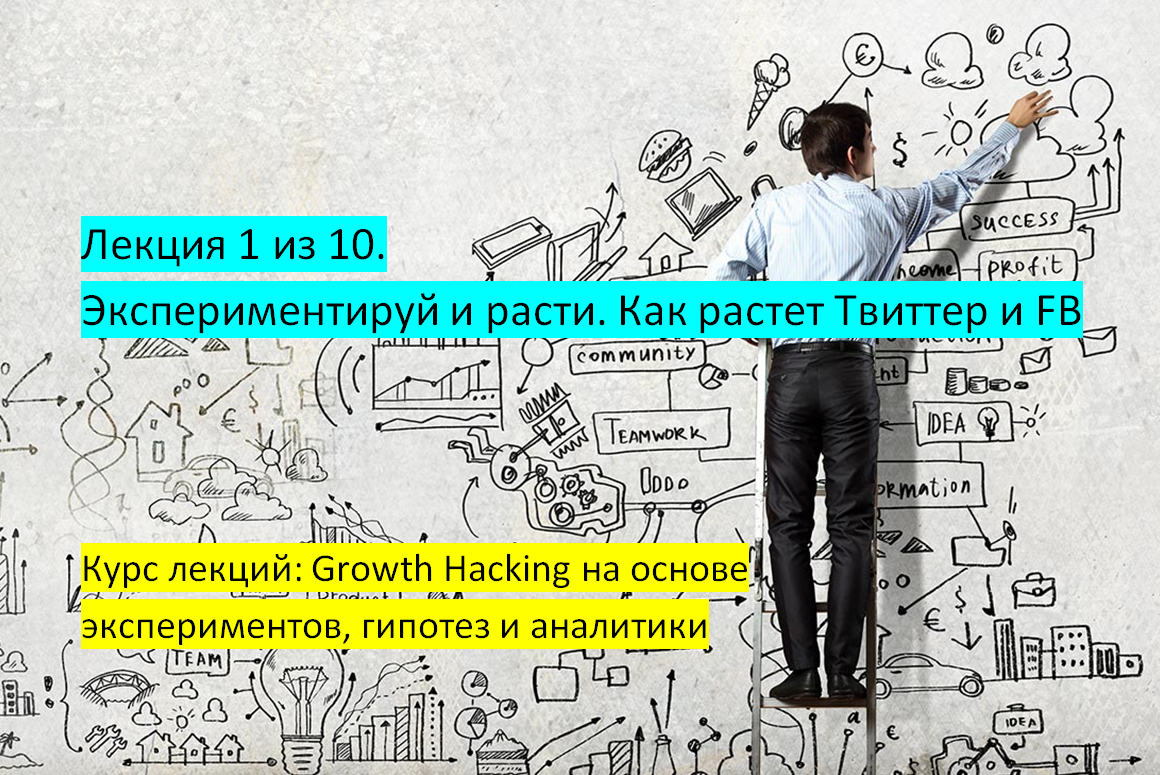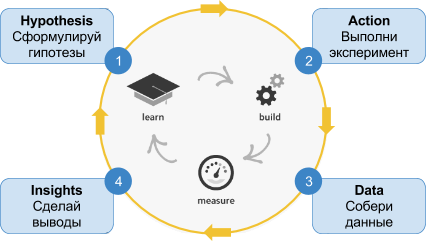Lecture 1 of 10. Experiment and grow. How Twitter and FB Grow
- Tutorial

Growth Hacking is already a science and it claims that the key to multiple growth is within the team.
The hopox hypothesis testing service in 10 lectures systematizes knowledge of multiple growth based on experiments, hypotheses, and analytics. Here is the content of the lecture course:
- Experiment and grow
- 7 types of hypotheses
- Growth Team Work
- Attraction Hypotheses and Values
- Data Based Work
- Activation hypotheses
- Retention hypotheses
- Virality hypotheses
- Hypothesis Memo
- What have I withheld.
Lecture 1. Experiment and grow
What is the secret to the rapid growth of Twitter, Facebook, Amazon?
Perhaps they originally had a brilliant idea? Or have crazy investments hired expensive marketers? Maybe just lucky?
I’ll say the answer right away: in fact, they were not afraid to experiment, make mistakes, and did this often and quickly. The location of the buttons on Facebook, the mechanics of retaining users on Twitter, the compulsion to buy on Amazon or Booking through a chain of letters, retargeting or discounts, all this is the result of a huge amount of experimentation.

All large companies do this. Facebook’s mobile application constantly requires updating, Amazon changes the code on the site every 11 seconds on average, and Twitter vice president admitted that significant growth began when ten hypotheses began to be tested in
a week, not one in two weeks.
Number of experiments performed per week = company growth rate.
Any marketing actions, even changing the code on the site, can be interpreted as an experiment. But feel the difference between “just selling” over the phone, or selling a lot if the processes are in place, the staff is trained, and a CRM system is introduced. The difference, as between craft and production, is not it?
Use this 10-lecture material and hopox marketing service to help your company grow spontaneously. Now, growth is a streamlined, manageable process that can be measured and influenced.
The described growth technology is ideal if you already have a product in which users feel happy and pay for it. In this case, multiple growth is achieved by continuously searching for bottlenecks, reducing costs and increasing the number of customers through fast data-based experiments.
Who came up with these marketing experiments?
In the book “Business from scratch,” Eric Ries described the scientific approach to bringing new products and services to the market with minimal resource costs through ongoing experimentation and customer feedback. Here are a few key principles you need to use to organize your experimentation process:
- Any marketing initiatives should be taken only as assumptions. To quickly verify the assumptions, formulate them in the form of a hypothesis indicating the predicted effect in numbers.
That is, now we formulate all tasks as hypotheses:
“If <action>, then <result in numbers>”
- Any new functionality can be checked by creating a Minimally Viable Product (MVP) in order to receive feedback from the client and understand what kind of functionality really needed. This statement applies to everything.
- You can not build long-term plans. Having a long-term vision, divide the plan into short iterations for a period of one to two weeks and do only what you can quickly get the client’s response to.
- Start the continuous learning process in the Build-Measure-Learn cycle. This cycle connects the experiment into one process, receiving feedback from the client in numbers and realizing the results of the experiment.

What does the Build-Measure-Learn cycle give?
1. Objective development based on data.
No sensations, emotions, speculation. The cycle allows you to measure efficiency immediately, as something is done. In fact, the cycle instills a data-driven work culture.
2. Continuous training.
It is important to understand that each product is unique, each audience is wayward and what works in one company may not work in another. Multiple advantage is possible when you do not copy someone else's model, but create your own, unique.
The cycle allows you to accumulate unique knowledge within the team. Each new hypothesis contains the accumulated experience of all
tested.
Hopox uses the HADI cycle (Hypothesis - Action - Data - Insights) - this is the simplest algorithm for cyclically checking ideas - from a hypothesis, through an action, to data and conclusions.
The control cycle begins with the formulation of a hypothesis (Hypothesis) on the principle of "if ... then ...". At the second stage, it is necessary to carry out a series of works to start the experiment (Action), then collect data for a given period (Data) and, in conclusion, make an unambiguous conclusion whether the hypothesis was successful, and what can be improved by starting the next cycle of hypothesis testing (Insights).
Homework:
1. Create a project in hopox
2. Add the whole team to the project
3. Create one simple experiment in hopox, which is easy to check in one week. Just take one task that you already wanted to do this week, only now do it in the form of a hypothesis indicating the result in numbers.
